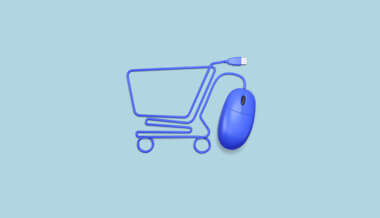August 21, 2019
The 3 must-have customer journeys for e-commerce
The e-commerce market has changed the way in which we shop, transact, and make decisions. Prior to the Internet, success in retail relied heavily on location, location, and location. Nowadays, the Internet is a global marketplace, affording even the smallest retailer a global presence. Brick-and-mortar businesses now have websites so that armchair shoppers can browse without leaving the house; at the same time, online-only retailers are now dominating the sale of consumer electronics, apparel, and accessories over their brick-and-mortar counterparts.
In 2017, global e-commerce sales amounted to $2.3 trillion, with e-commerce revenues projected to grow to $4.88 trillion by 2021 (Statista). E-commerce has become such an essential part of our daily lives that it’s difficult to pinpoint precisely where e-commerce begins and old school retails ends. Today, your customers are expecting stitched-up online and offline experiences. This means that e-commerce businesses have no choice but to smash down traditional silos and embrace seamless, cross-channel business models — or risk losing leads and potential sales revenue.
Increase e-commerce sales with the power of customer journeys
When your customer buys something from your online store, their decision-making process is not quick and linear. Your customer will rarely just decide they need a new t-shirt, go online, click the first t-shirt they see in their search results and hit the purchase button. Thanks to the Internet of Things, the vast choice available to customers today, and the blurring of lines between online and offline experiences, the buying process is much more complicated.
For one thing, many items are not bought out of necessity but out of convenience or desire. For this reason, your customers prefer to conduct extensive research, read reviews, and compare prices before they decide to buy. Also, in the past, brands and customers used to interact only in stores and perhaps through a TV or print ad. Today, communication happens everywhere and all the time. The e-commerce customer journey has so many steps before and after purchase — and many touchpoints along the way.
The customer journey is a critical part of your e-commerce sales process. Why? Because it’s essentially your sales funnel. Understanding the exact process that a customer goes through when they’re researching, deciding, and purchasing from your e-commerce business is key to knowing which buttons you may need to push along the way.
In this article, we outline 3 e-commerce must-have customer journeys that all e-commerce business owners should familiarize themselves with to ensure that they’re not missing out on opportunities to capture, engage, and convert valuable leads.
1. Cart abandonment
Do you often find that your customers are putting items in their online shopping cart, only to leave your website without completing their purchase?
According to the Baymard Institute, 69.5% of customers put items in their shopping cart but fail to follow through to purchase. Abandoned carts are frustrating because they significantly reduce revenue for e-commerce businesses. There are several reasons why cart abandonment happens: perhaps your customers are frustrated over the complexities of having to create a new user account before they can purchase, or maybe they’ve been confronted with unexpected shipping costs. It’s also possible that your customers couldn’t find a valid coupon code to use, were overwhelmed by a complicated check-out-process, were just researching to buy later, or simply just forgot to hit “pay now.”
Even though we can’t eliminate cart abandonment completely, we can minimize the likelihood of it happening. How? By using abandoned cart emails. Our abandoned cart customer journey below is designed to recognize when a contact has abandoned their cart so you can re-engage with them to get them back on track. In this journey, we send a series of emails to guide them to purchase. The first email acts as a simple reminder, with a low-commitment call-to-action.
Following a four-hour delay, a second email is automatically sent if the contact still hasn’t returned to their cart. This email lets the contact know that help is at hand if they had any questions or concerns about the order or the check-out process. And if the cart still remains untouched a day after that, the contact will be sent a further email with a final incentive such as a discount or a free shipping offer — it could be the final push they need to complete their purchase.
To see this journey in action, watch the video below.
2. Re-engaging customers who have recently purchased
It’s easier to get a sale from someone who has already bought from you. In fact, the average business forks out 5 times as much to attract a new customer than to keep an existing one (Invesp). There are several tactics you can use in unison to retain your customers before, during, and after their purchase — they include upselling and cross-selling products they might like, creating a loyalty program to encourage repeated (and regular) purchases, or taking them through a lead nurturing email journey. A lead nurturing email journey is an effective way to retain your e-commerce customers because it will allow you to successfully communicate and stay top-of-mind.
In the journey below, our goal is to reach out to customers who have previously purchased from your website and re-engage them with content that will sway them to purchase again. Let’s say the last item your customer bought from your store was a cast-iron wok. Your first email could comprise a list of recipes they could try cooking with their newly-seasoned wok, or perhaps a list of suggested items that they might be interested in such as a pair of tongs, a stockpot, or a spatula. If the contact engages with this email (e.g., by opening it or clicking a link in it), they will have their lead score increased. Updating their lead score allows you to identify hot leads that are more likely to buy again, so you can direct your further lead nurturing efforts towards them.
To see this journey in action, watch the video below.
3. Notifying customers of changes
As an e-commerce business owner, you deal with many events and changes that are simply beyond your control. From weather patterns affecting package delivery times to suppliers falling behind in their orders, there are periods where things may not run like clockwork. In most cases, there is not much you can do to avoid these situations.
Unfortunately, not all your customers will be completely understanding of your situation. If they’ve purchased your product or booked your service, they will expect to have it as soon as possible. The best way to avoid bearing the brunt of their frustrations is by alerting them of any changes as soon as they happen so that they can adjust their expectations accordingly.
In this journey, a push notification is immediately sent to the customer via Autopilot’s OneSignal integration. If your customer hasn’t opened the notification after 2.5 hours, they will then be followed up with email and SMS reminders to ensure they’re aware of your changes.
To see this journey in action, watch the video below.
Want to see more e-commerce customer journeys?
Simply visit our template library to browse our extensive collection of free e-commerce customer journey templates here. Whether you want to receive customer feedback after an order has been completed or AB split test SMS discount offers, our e-commerce customer journey templates can be used as they are or easily modified to suit your goals.













